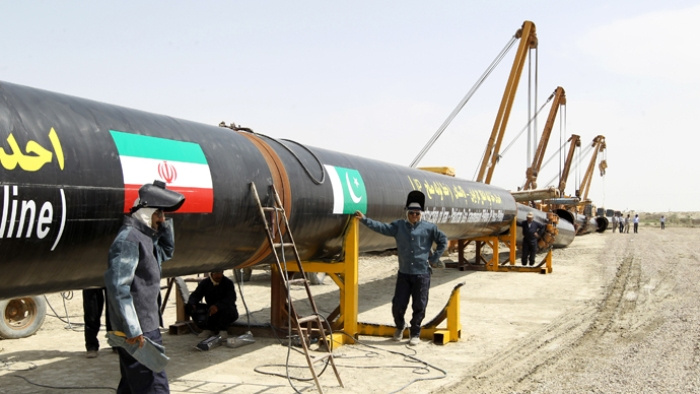Time for Revival of Iran-Pakistan India Pipeline

By: Kaveh Afrasiabi
Exactly fifteen years have passed since the joint gas commission of Iran and India issued a statement, on February 13, 2001, in Tehran, stating that the two countries “shared the view that while generally the overland pipeline option is economically the most viable, in the present instance there are serious security aspects which need to be comprehensively addressed." This was officially endorsed during the subsequent Tehran visit of the then Indian Prime Minister Atal Bihari Vajpayee on April 10, 2001. Since then, the idea of a trilateral Iran-Pakistan-India pipeline has been inked on paper, scrapped, reduced to a bilateral Iran-Pakistan, and now potentially revived in the new post-nuclear agreement context.
Although economically beneficial to all three countries, the so-called "peace pipeline" has so far had its fair share of difficulties and setbacks, including a robust US opposition throughout the past decade or so that, as a result, some pundits have reached the conclusion that it is a pipe dream, rather than a realistic option, in light of the enduring India-Pakistan hostilities; even in the post-sanctions era, the Pakistani press have been reporting of continuing US pressure on Pakistan to forego the Iran pipeline project. Little surprise, then, Iran and India have shifted attention to the alternative of an undersea Iran-Oman-India pipeline, even though it costs more. In 2009, under US pressure, India gave up on the overland pipeline from Iran in order to protect its nuclear agreement with Washington, despite several Indian energy feasibility studies that have uniformly backed the "peace pipeline" as economically viable and in line with the energy needs of India.
The geopolitical considerations aside, Iran and India have been at odds over the right gas price and the review cycle -- Iran opting for a 3-year review and India preferring a 7-year review cycle-- which can be bridged by, say compromising on a 5-year review, given the volatility of the global gas market.
In fact, one can argue that, indirectly at least, the "peace pipeline" has been making progress, in light of Iran's completion of its side of the 781-kilometer Iran-Pakistan pipeline, from Assaluyeh to Iranshehr. Despite a Tehran loan to Islamabad, the Pakistani side of the gas infrastructure has not been completed, due to both financial and regional political realities. But, in his recent Tehran visit, Pakistani Prime Minister Nawaz Sharif expressed his country's intention to proceed with the pipeline project, which is badly-needed by Pakistan.
In the new post-sanctions era, fortunately neither India nor Pakistan face the actual threat of US retaliation against them if they proceed with the "peace pipeline," a term nowadays reserved for the Turkmenistan-Afghanistan-Pakistan-India pipeline, facing numerous security issues. In a sense, both India and Pakistan have exhausted other regional energy options and have realized that the Iran option has multiple advantages, one of which is Iran's stability compared to the chronic instability of Afghanistan, which is likely to grow worse with the NATO's and US's exit. But, the big question is if there is sufficient political will in India and Pakistan to bring this project to fruition in the near future? From an economic standpoint, it is definitely in the national interests of both nations to do so, but a crucial factor is the negative input of certain powers in the region and beyond that dislike it due to their hostilities toward Iran.
One way to create a more hospitable climate for the "peace pipeline" is to regionalize and even internationalize the project, by getting other countries in the region as well as foreign companies invloved, and to continue the deliberations on the lingering issues, such as the sales prices and transit prices, etc.
Another boost for the project could come in the form of renewed Pakistani pledge to guarantee the safety of the pipeline to India and to insulate it from any tensions in India-Pakistan relations, as has been the case in their water agreements since the 1960s; in the past, the highest authorities in Pakistan like General Pervez Mosharraf have publicly declared their country’s willingness to give all guarantees needed for the movement of natural gas from Iran to India via Pakistan, a pledge that now needs to be reiterated by the Pakistani government, which has as of late showed new interest in improving ties with India.
In a word, the time is now right, and the regional climate is warming to the essential gas project that, if implemented, will enhance regional integration and interdependence, i.e., a definite boon for regional peace and tranquility.

